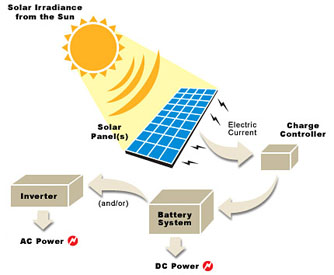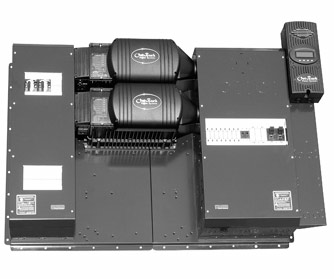inverter

How an inverter works as part of a solar power system.

R Powr panel (4 kW) with two 24-volt Outback FX2000 inverters: a fully-integrated power conversion center that can be used with grid-connected or stand-alone systems.
An inverter is a device that converts direct current electricity (for example, from a solar module or array) to alternating current (single or multiphase), for use in operating AC appliances or supplying power to an electricity grid.
Stand-alone inverters, also known as off-grid inverters, convert DC power stored in batteries to AC power that can be used as needed. Synchronous inverters, also called grid-tie inverters, can be used to convert the DC output of a photovoltaic module, a wind generator, or a fuel cell to AC power to be connected to the utility grid. Multifunction inverters, such as the one illustrated here, can perform both functions.
The electronic circuitry in inverters may, in some cases, cause problems with radio and television reception, noise on telephones and buzz in audio equipment. Sine-wave inverters cause the least amount of interference. Interference can be minimized by locating the inverter very close to the batteries, twisting together cables that connect the inverter to the battery, and locating the inverter away from appliances that are susceptible to interference.
With reference to air conditioners, inverter technology allows variability over control of a compressor in an air-conditioning unit. Traditional air-conditioners rely on switching the compressor on and off to control operations, which is less energy efficient.
